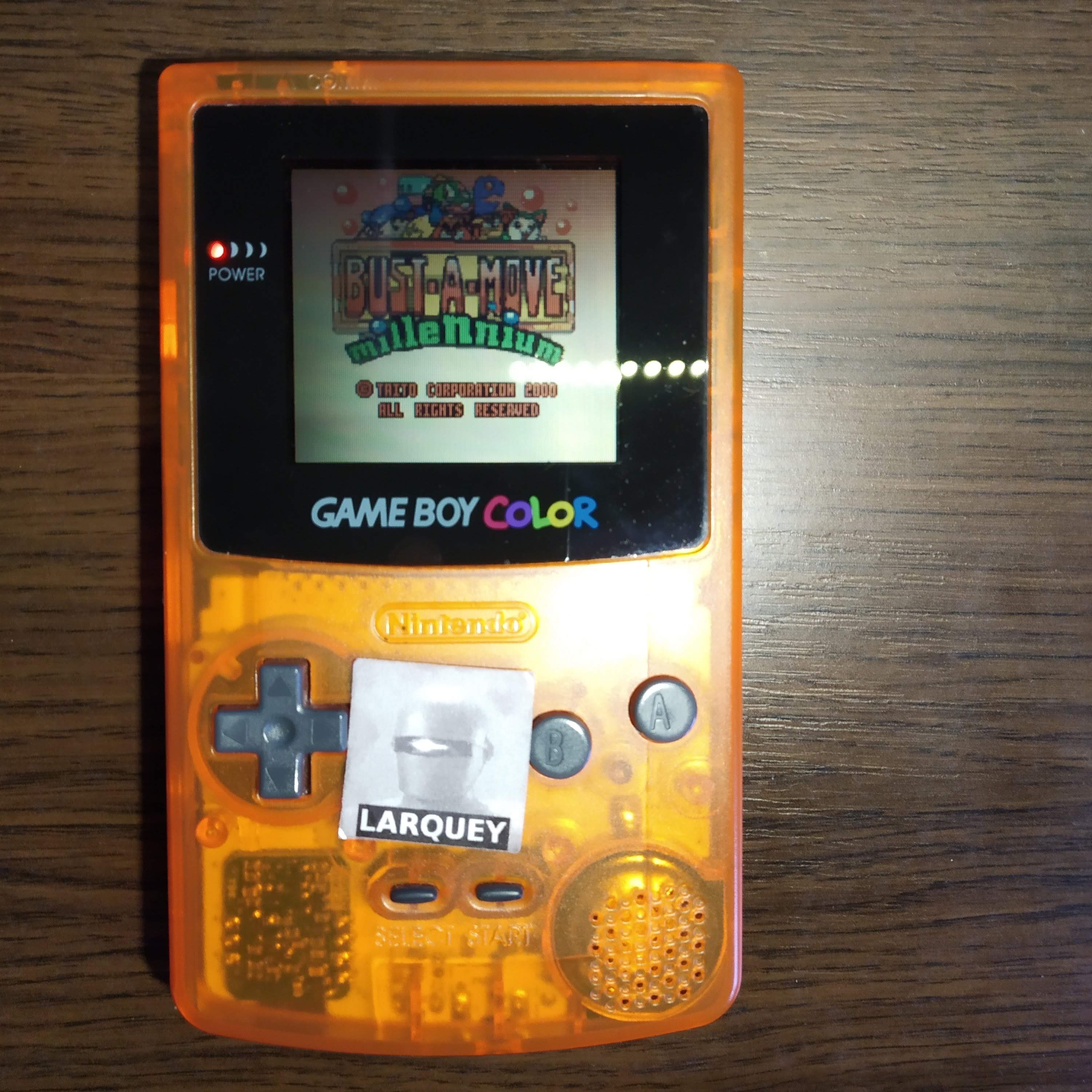

The game has a detailed look and is somewhat textured, reminiscent to the appearance of backgrounds in Yoshi’s Story for N64.Īlthough the version on N64 sported four-player VS modes, it seems that this version will only allow two people to go head-to-head. The characters may look weird and a little simple, the graphics in the game seem highly improved. The creatures shown as playable characters are very… different, than the competitors seen in previous games. Screenshots seem to show the green dino blowing bubbles so the classic character may not be playable himself.


Alongside one of the familiar dinos, have been seen many oversized, colorful creatures. This time around, there will be six types of bubble balls.
Bust a move 4 game boy color plus#
Called Super Bust-a-Move, the handheld version breaks down into 565 puzzle screens that comprise 311 total levels spread across 27 funny “universes” (26 plus one bonus one universe that is unlocked). Now Ubi Soft will publish the latest incarnation of this classic puzzler on Game Boy Advance and have released details regarding the game during this year’s ECTS. Throughout all the iterations & additions, the game has remained essentially the same. For Bust-a-Move 4, players could actually play each other over the Internet. On the Dreamcast, characters were more detailed and animated than before. On the N64, the dinos faced off against several classic bad guys and characters from Taito’s other video games-many which had not been seen outside of Japan previously. Bust-a-Move became intensely popular, and has subsequently received sequels & re-releases across many video game systems without ever changing very much at all.To date, 7 versions have been released on almost every console (PlayStation, PS2, Game Boy, PC, Dreamcast, Nintendo 64) and all of them have been successful, selling millions of copies around the world. If the balls mount up pass the boundary line, well… “Game over, man!”įor reasons unknown, the game appeared in North America as “Bust a Move,” which would later caused Enix’s rhythm & dance game of the same name to be renamed to “Bust-a-Groove” in the States (but that’s quite a different story…). If you are unable to eliminate the balls in a timely manner, they will begin to accumulate. The colored balls stick together and once three balls of the same color are connected, they burst, clearing room on the game screen. Years after their debut, they appeared in the 1993 game “Puzzle Bobble.” Instead of blowing bubbles, Bub & Bob fired multiple colored balls to the top of the screen. The characters continued to return in various sequels. The Bub & Bob characters endured, appearing as humans in the follow-up, Rainbow Islands. The game appeared on the NES, and was one of a handful of games for the system that allowed simultaneous 2 person co-operative play. Simple, abstract and adorable Bubble Bobble had great gameplay and a VERY memorable tune serving as background music. They captured enemies in these bubbles, and then would have to pop them-which turned the baddies into food. They were named “Bub” and “Bob” and appropriately enough, they blew bubbles. It featured two humans who had been transformed into dinosaur protagonists. In 1986, Taito released an innocent game called Bubble Bobble.


 0 kommentar(er)
0 kommentar(er)
